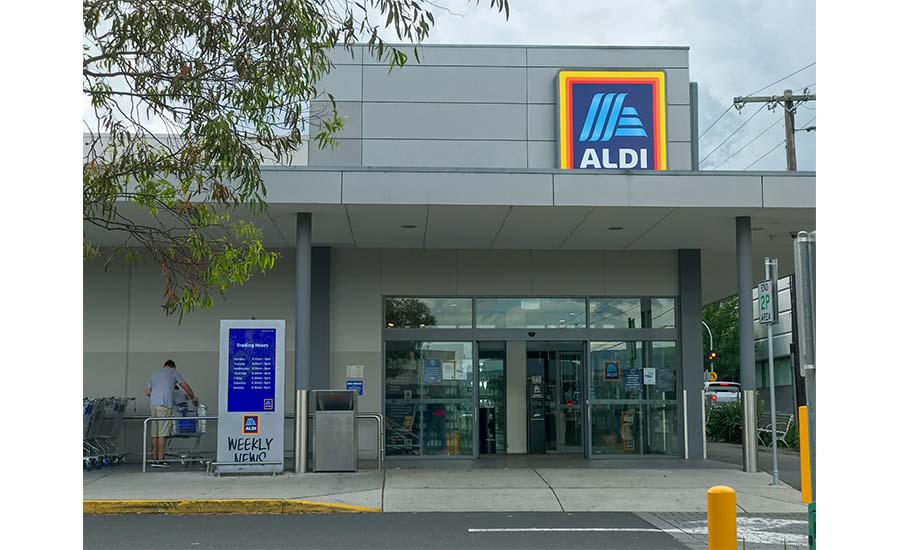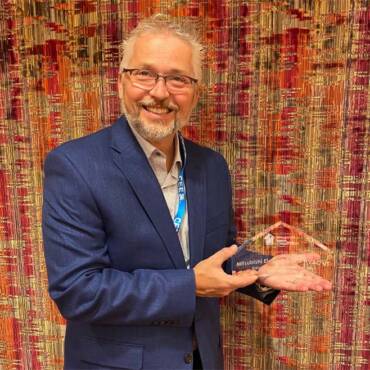In the ongoing battle against climate change, the U.S. supermarket sector is relentlessly pursuing innovative strategies to reduce its carbon footprint and enhance energy efficiency. Refrigeration systems, which account for approximately 40% of supermarkets’ energy consumption, have emerged as a critical area for improvement. CO2 refrigeration, aka R-744, has emerged as a cutting-edge solution that supermarkets continue to incorporate to help reduce their emissions.
Historically, commercial refrigeration systems have used synthetic refrigerants, such as hydrofluorocarbons (HFCs) or gases that blended HFCs with hydrofluoroolefins (HFOs). Recently, these refrigerants have become highly scrutinized due to their high global warming potentials (GWPs) with many ranging from 1,000 to 4,000. On the other hand, CO2 (R-744) has a GWP of 1.
Many U.S. supermarkets are leaning on case studies established over the pond. According to Atmosphere’s Natural Refrigerants: State of the Industry, nearly 25% of all European stores have already implemented R-744. The study states that while the number of stores utilizing CO2 rack systems grew by a modest 20% in one year; the use of CO2 condensing units is up 70%.
R-744 is emerging in the U.S. as well. According to the North American Sustainable Refrigeration Council (NASRC), the demand for R-744 is projected to reach 13 million pounds by 2027, up from 3 million pounds in 2023.
2024 U.S. Supermarket Scorecard
Unfortunately, adoption of CO2 refrigeration can’t come soon enough, according to the U.S. Energy Information Administration (EIA), which released its 2024 U.S. Supermarket Scorecard in May. The research grades 16 U.S. supermarket chains on their climate actions and their overall efforts to reduce emissions. Each company is scored across three categories: technology adoption, refrigerant management, and policy & commitments.
In a general statement, Avipsa Mahapatra, climate campaign director for the EIA, chastised the progress of many leading supermarkets.
“Our third scorecard serves as a stark wake-up call: The biggest American supermarkets continue to use and leak easily avoidable super pollutants,” said Avipsa Mahapatra, climate campaign director, EIA. “The lack of transparency and sluggish adoption of HFC-free technology by several of these companies receiving failing scores is inexcusable in the face of our climate crisis.”
The report reveals:
- ALDI, Whole Foods, and Target continue to lead the sector with the highest overall scores.
- ALDI is the top scorer overall and in technology adoption with hundreds more HFC-free stores than any competitor; Meijer is the highest scorer in refrigerant management with the lowest leak rate; and Walmart and ALDI tied for the highest in policy engagement and commitments.
- Giant Eagle, Meijer, and Southeastern Grocers have yet to install HFC-free refrigeration in a single store, although several stores have partial installations.
- Eleven of the sixteen companies have less than 1% of their stores using entirely ultra-low GWP refrigerants.
- Walmart has made a major commitment to eliminate all emissions, including HFCs, by 2040 but has only installed ultra-low GWP refrigerants in a single store and released no specifics on its implementation plans or anticipated milestones.
- Twelve of the sixteen companies have a public commitment to reduce refrigerant emissions; however, only eight have a time-bound goal for reducing HFCs.
- Emissions from refrigerant leaks among all U.S. supermarkets are estimated to equal 65 billion pounds of coal burned in a year. Several companies showed progress in their efforts to reduce refrigerant leak rates, although only five of the companies disclose an annual average leak rate.
- Not all of the 16 participating retail companies shared refrigeration data with the EIA.
ALDI Leads the Way
ALDI’s leadership is demonstrated through its goal to transition to natural refrigerants across all U.S. stores before the end of 2035.
ALDI representatives believe natural refrigerants will keep its products fresh while supporting a healthier planet. The goal builds on the grocer’s use of environmentally friendly refrigerants in more than 600 stores, saving the grocer nearly 60% of potential carbon emissions annually.
“As one of America’s fastest-growing retailers, we take our responsibility to lead the industry in sustainability seriously, so our customers don’t have to choose between shopping responsibly and saving money,” said Jason Hart, CEO, ALDI. “Eliminating plastic shopping bags from our stores and transitioning to environmentally friendly refrigerant systems not only help us protect the environment, but they also help reduce costs which we then pass on to our customers. These decisions help our customers feel good about shopping at ALDI and our employees feel proud to work here.”
Whole Foods Approaches 10 Years of Refrigeration Sustainability
In 2022, Whole Foods Market announced it improved its energy performance by 21% from a 2010 baseline, achieving its Better Buildings Challenge goal two years ahead of schedule. This was achieved in part by implementing a wide range of retrofit projects and an energy awareness program for store operations across its 12.3 million-square-foot building portfolio.
“At Whole Foods Market our mission is to nourish people and the planet, and we strive to fulfill this mission in all aspects of our business, including the design and operation of our stores,” said Caitlin Leibert, vice president of corporate social responsibility at Whole Foods Market. “We’re encouraged by the progress we’ve made thus far and are committed to continuing this very important work with the U.S. Department of Energy and stakeholders across the industry to help raise the bar for energy efficiency and environmental stewardship.”
In 2016, Whole Foods installed a hydrocarbon (HC)/CO2 cascade system designed to reduce the environmental impacts of its refrigerants to near zero. With high heat-carrying properties, the use of CO2 reduces both the amount of refrigerant needed and the energy required to run refrigeration systems. Simultaneously, a heat reclaim system captures the heat generated by the system and uses it to preheat water for the store’s later use while also supplementing space heating. This allows the store to greatly reduce the amount of natural gas burned to heat water. The system is designed to prevent more than 7,000 metric tons of CO2 equivalent than a typical supermarket emits annually, which is more than the entire annual electricity use of 1,000-plus homes.
The system is designed to use a minimal amount of CO2, said Tristam Coffin, former sustainable facilities coordinator for Whole Foods Market Northern California.
“There is precedent for this type of system in North America and Europe, but this is among the first installations of the technology in the U.S.,” he said. “It’s a natural fit for Whole Foods Market to help design and launch it in California because we’ve invested in environmental advancements as an ongoing business practice.”
Target Aims to Curb Emissions
Target’s emissions reduction strategy centers around adopting renewable energy, driving energy efficiency, and implementing other sustainable practices. The supermarket’s internal Sustainable Building Council, a cross-functional team within Target Properties, coordinates sustainability strategies and helps develop priorities and roadmaps to meet our long-term goals.
Accordingly, the supermarket has an aim to achieve net-zero emissions in its owned operations. To achieve this goal, leaders have pledged to transition to natural (100% CO2) refrigerants.
Target has also joined the U.S. Environmental Protection Agency’s (EPA’s) GreenChill program, working to reduce refrigerant emissions and transition to CO2 refrigerants that have less impact on the environment. To date, Target has 130-plus stores certified or pending certification to date.
In 2022, Target completed the remodel of T2165 Vista, CA, designed to be the supermarket’s first net-zero energy store.
“This store is truly a test kitchen for some of the features that can help us as we work toward our larger goal of 100% renewable electricity,” said Rachel Swanson, lead program manager, energy & sustainability, Target. “Designing this project was intimidating at first, especially when you consider the moving target of energy consumption and all the stakeholders needed to pull it off. I’m so proud to see it come to life, and looking ahead, I’m excited to use what we learned here to help us achieve our goals and make a positive impact.”
Whether you require installation, repair, or maintenance, our technicians will assist you with top-quality service at any time of the day or night. Take comfort in knowing your indoor air quality is the best it can be with MOE heating & cooling services Ontario's solution for heating, air conditioning, and ventilation that’s cooler than the rest.
Contact us to schedule a visit. Our qualified team of technicians, are always ready to help you and guide you for heating and cooling issues. Weather you want to replace an old furnace or install a brand new air conditioner, we are here to help you. Our main office is at Kitchener but we can service most of Ontario's cities
Source link




Add Comment